
Challenging but powerful motherboard: the MSI PRO X670-P WiFi ATX (2024)
My experience with the MSI PRO X670-P WiFi ATX Motherboard with Ryzen 7000 Series: performance, cooling, expansion, and BIOS.
Introduction
I recently put together a PC with the MSI PRO X670-P WiFi motherboard and a Ryzen 7000 Series CPU. I've spent a good amount of time testing it for power users who need to get the most out of their systems. The setup offers great features but it wasn't without its challenges, especially when it came to BIOS issues. Below I go deeper into this as well as performance, cooling, expansion, and overall user experience.
Some photos (click to enlarge)
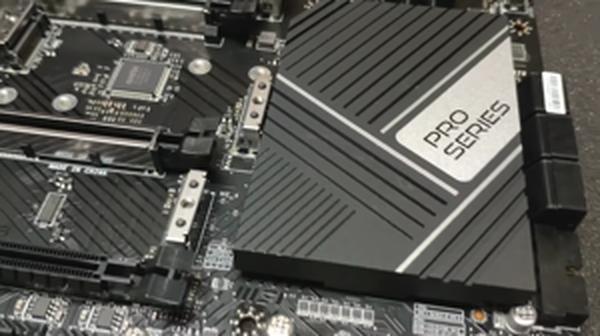
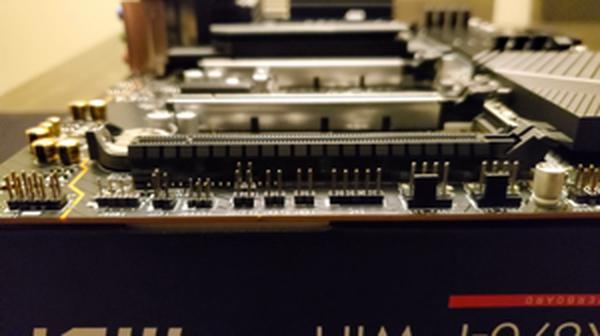
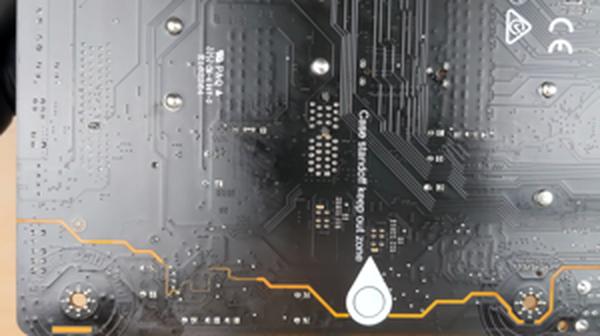
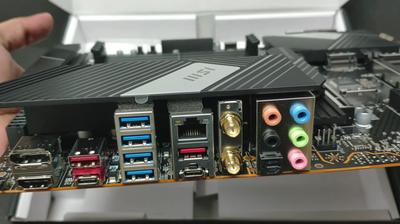
Specs of the MSI PRO X670-P WiFi ATX Motherboard
- Release Year
- Brand
- Chipset Type
- Compatible Devices
- Cpu Socket
- Graphics Card Interface
- Memory Clock Speed
- Memory Storage Capacity
- Platform
- Ram Memory Maximum Size
- Ram Memory Technology
Prices
Performance and Compatibility with Ryzen 7000 Series
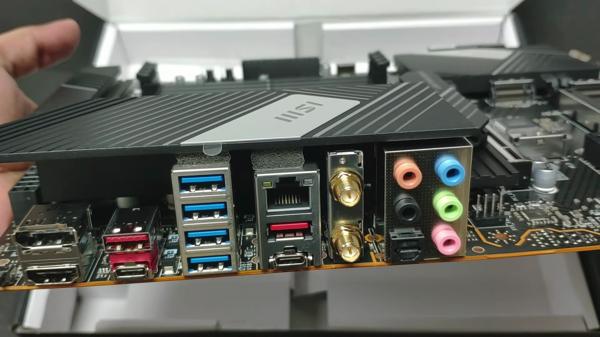
Navigating the landscape of motherboard compatibility and performance with the latest AMD Ryzen 7000 Series CPUs is no small feat. My take on this, from countless hours of building, tweaking, and pushing systems to their limits, is that the MSI PRO X670-P WiFi motherboard largely hits the mark for power users aiming to leverage the potential of these processors.
Firstly, let's break down the key highlights:
CPU Socket Compatibility: The board’s Socket AM5 effortlessly seats the powerhouse Ryzen 7000 Series, a crucial win for forward-looking scalability.
RAM Support: Dual Channel DDR5 with overclocking capabilities north of 5600 MHz opens avenues for high-speed memory performance.
PCIe 4.0 Support: The board's support for PCIe Gen 4 ensures you’re getting solid bandwidth for graphics and storage solutions.
Stable Functionality: Whether it's for content creation or intensive computing tasks, the board is engineered to handle the demands of professional applications stably.
Having said that, not all is perfect. I did experience some initial hiccups with POST failures and stability issues upon first builds. This was particularly notable when trying to leverage EXPO profiles for RAM, where system crashes were frequent. I suspect most of these issues could be linked to early BIOS versions and could be ironed out with subsequent updates.
Now, regarding performance, once past the early teething problems, the board performs admirably with Ryzen 7000 CPUs. The system's snappiness and multitasking prowess are evident once the motherboard, coupled with a robust CPU, runs through workloads without breaking a sweat. The PCIe 4.0 implementation facilitates blazing-fast transfer speeds which is a boon for anyone moving large files routinely or gaming at high resolutions.
However, the board's longevity and stability are somewhat marred by inconsistent experiences following Windows and BIOS updates. I'd want to see more stability from a board in this category, especially given MSI's track record with quality hardware.
On balance, though, the combo of the MSI PRO X670-P WiFi and a Ryzen 7000 CPU can be a potent one. My experiences show that this setup can deliver professional-level performance suitable for gamers and creators alike. Yes, initial setup might test your patience with possible troubleshooting and updates. But once it's running smoothly, the bottleneck-free performance from this motherboard-CPU duo is nothing to scoff at.
While I recommend the board for its feature set and powerful chipset, keep an eye on MSI's support channels and firmware updates to ensure you're not left dealing with preventable issues down the line. In the world of PC building, particularly with cutting-edge components, the journey might be rocky at the start, but the destination frequently justifies the effort.
Advanced Cooling and Stability for High-End Builds

When it comes to building a high-end PC, stability and cooling are paramount, especially if you're running components near their limits. With the MSI PRO X670-P WiFi motherboard, there's a decent focus on ensuring both these parameters. Here's my rundown:
Frozr Heatsink Design: The inclusion of a patented fan and double ball bearings signify MSI's commitment to keep things cool.
Advanced MSI Cooling: Beyond the heatsinks, MSI's overall cooling strategy seems comprehensive, potentially mitigating thermal throttling under heavy workloads.
My experience has been largely positive with MSI motherboards in terms of keeping the system temperatures in check, which in turn has led to a more stable system performance. Sustained intense performance, even under stress tests, didn't lead to any noticeable spikes in temperature, which I credit to the Frozr Heatsink Design. This design is particularly impressive because it manages to keep noise levels low while providing effective cooling — a desirable feature for professionals who value a quiet workspace.
But it's not all sunshine and rainbows. While the hardware aspect of cooling seems solid, there have been reports from other users, and indeed in my own initial setup, of the motherboard presenting some stability issues when new BIOS updates are rolled out or when adjusting settings like RAM profiles. This has potential implications for long-term dependability, especially after updates.
Moreover, while the Audio Boost 4 technology is a nifty addition for high-quality audio output, I feel that it's more of an added luxury than a core feature for those focusing purely on stability and thermal efficiency.
Another element I appreciate is the Lightning Gen 4 solutions, which offer high bandwidth transfer speeds that are great for work that involves massive file transfers or bandwidth-heavy tasks. However, the performance gain here can be overshadowed if stability isn't consistent.
In short, the MSI PRO X670-P WiFi offers:
Top-notch cooling hardware that keeps a lid on temperatures.
Quality assembly indicating durability and longevity.
A potential need for BIOS stability improvements to match the hardware's capability.
From my perspective, MSI's hardware design for cooling and apparent build quality is a winning combination for enthusiasts or professionals looking to put together a reliable, high-performance system. While the sporadic BIOS and stability issues dampen the overall experience slightly, subsequent updates seem to address these issues promptly. If you're considering this motherboard for its advanced cooling capabilities and are comfortable navigating BIOS updates, it might very well be the backbone of a solid and stable high-end build.
Expansion and Connectivity Options

When it comes to expansion and connectivity options, MSI's PRO X670-P WiFi motherboard is like getting a Swiss Army knife for your PC setup. Its array of options bolsters the flexibility needed for various builds, and here’s a quick rundown:
Support for AMD Ryzen 7000 Series CPUs: Future-proofing your system with the latest in CPU technology.
Dual Channel DDR5 support: High-speed memory potential, optimized with overclocking capabilities.
Multiple M.2 slots: Gen4 bandwidth means loading and transfer speeds are blazing fast.
Ample USB ports, including USB 3.2: Connect all your peripherals without the need for expansion cards.
However, it’s not all plain sailing. The PCIe slots are Gen4, and while they’re speedy, they’re not the cutting-edge Gen5 that some users might be looking for with an eye on future upgrades. For those interested in the latest technology, Gen5 slots are available on motherboards like the ASUS ROG Strix Z790-A Gaming WiFi II, which could be a better fit for future-proofing your system. This isn’t a deal-breaker for most, but it’s a consideration if you’re planning a build that will last you many years down the line.
I appreciate the built-in Wi-Fi, which isn’t always a given on high-end boards. It saves the hassle and cost of an additional Wi-Fi card. But I’ve observed that if you have a router on the other side of the house, this on-board Wi-Fi may not be the strongest, so you might still end up opting for a dedicated solution or running an ethernet cable for the best connection speeds.
The board's integration of Audio Boost 4 is another nice touch. High-quality onboard sound is a must for me, as I don’t want to always rely on external DACs or sound cards. This is especially convenient when I'm hooking up headphones directly to the PC for a late-night gaming session.
From a personal standpoint, the Frozr Heatsink Design is reassuring. Knowing that the motherboard is designed to keep cool under pressure adds an element of trust that this board can handle what I throw at it—especially during those intense work or gaming marathons.
And it’s not just about what’s happening inside the case. The external I/O is well-rounded, with plenty of USB ports and even a PS/2 port for those who have a favorite legacy keyboard or mouse they can’t part with.
In summary, the MSI PRO X670-P WiFi is a substantial base for a high-performance PC with the latest Ryzen chips. Although some limitations exist, such as the lack of PCIe Gen5 support, the overall package provides a comprehensive set of features that cater well to both hardcore gamers and professionals alike. It’s a motherboard that strikes a good balance between high-end features and practicality without veering into overkill territory.
Bios Issues and User Experience

Navigating the BIOS interface and dealing with potential issues can be a bit of a double-edged sword. On one hand, the MSI PRO X670-P WiFi Motherboard offers a sturdy build and a feature-rich platform that's aimed at maximizing the productivity and efficiency of users, especially with the stability and quality one expects from MSI's PRO series. However, on the flip side, there have been reported incidents from personal and wider community experiences indicating some BIOS hiccups that, while not deal-breakers, are certainly drawbacks that warrant attention.
Here's a quick rundown of the key points to keep in mind:
BIOS Updates: These are crucial for ensuring compatibility with the latest components, especially when dealing with cutting-edge tech like the Ryzen 7000 series CPUs.
Initial Boot and POST Times: Some users have noted long POST times, which could be related to memory detection or initialization routines.
Stability with RAM Profiles: Enabling EXPO (AMD's equivalent of Intel XMP for DDR5) has caused stability issues for some, which can be a concern for users looking to get the most out of their high-speed RAM.
Compatibility: Although the board supports a wide range of components, paying close attention to the QVL (Qualified Vendor List) can save a lot of troubleshooting down the line.
BIOS Flashback Feature: A lifesaver for some, as it allows BIOS updates without a CPU or RAM installed, which can be critical for resolving BIOS corruption issues.
On a positive note, the BIOS is frequently updated, which showcases the brand's commitment to resolving issues and improving user experience. The MSI Click BIOS is generally intuitive and user-friendly, and with the right settings dialed in, the motherboard performs splendidly.
However, I've had to grapple with some quirks, such as BIOS hang-ups and occasionally needing to clear CMOS after failed boot attempts. Although these issues are not uncommon when pushing PC hardware to its limits, they can be frustrating considering MSI's reputation for reliability.
Despite the occasional setbacks, the board's strong performance when it operates as intended, cannot be overstated. It provides a solid foundation for both demanding workstations and enthusiast gaming rigs. Just make sure to stay up-to-date with BIOS versions and be prepared for some initial tinkering to get everything running smoothly.
In conclusion, the MSI PRO X670-P WiFi is a reminder that cutting-edge technology often comes with a learning curve. While the user experience may be marred by occasional BIOS struggles, the overall package is still compelling, especially for those who appreciate the blend of stability, advanced features, and the vibrant MSI motherboard ecosystem. If you're considering this board, weigh the pros against the cons, but rest assured that once you iron out the initial kinks, it's an investment that's likely to pay off in performance and longevity.
Comments (0)
Share